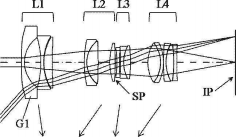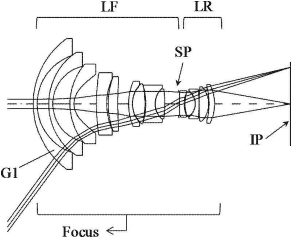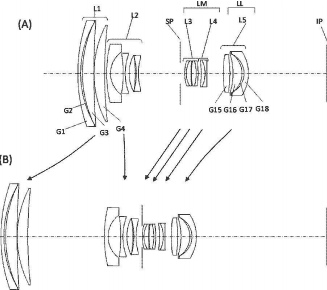Canon Patent For Two New Fluorite Treated Lenses


Egami (translated) spotted a patent referring to two new lenses, a 14mm f/2.8 and a 17-35mm f/2.8-4, both with fluorite treatment. According to WIkipedia…:
Fluorite (also called fluorspar) is a halide mineral composed of calcium fluoride, CaF2. It is an isometric mineral with a cubic habit, though octahedral and more complex isometric forms are not uncommon. Crystal twinning is common and adds complexity to the observed crystal habits.
[…]
Optically clear transparent fluorite lenses have low dispersion, so lenses made from it exhibit less chromatic aberration, making them valuable in microscopes and telescopes. Fluorite optics are also usable in the far-ultraviolet range where conventional glasses are too absorbent for use.
Click here to see a Canon video about fluorite and lenses.
The patent:
- Patent Publication No. 2013-37339
- 2013.2.21 Release Date
- Filing date 2011.7.12
- Example 1
- Zoom ratio 1.00
- Focal length f = 1.00mm
- Fno. 2.90
- Half angle of view ω = 56.66 °
- Image height Y = 1.52mm
- 9.51mm length lens
- BF 2.82mm
- 6 aspherical surfaces, the first surface 25
- Punctually
- Example 3
- Zoom ratio 2.06
- 2.06mm – f = 1.00 focal length
- Fno 2.79 -. 4.00
- Half angle of view ω = 51.27 – 32.82 °
- 1.33mm – Y = 1.25 image height
- 8.55mm – 8.79 length lens
- BF 2.41 – 3.46mm
- Aspheric first surface, the fifth surface, the first surface 26
- Positive and negative positive negative
- Example 6
- Zoom ratio 1.00
- Focal length f = 1.00mm
- Fno. 2.90
- Half angle of view ω = 87.35 °
- Image height Y = 21.60mm
- 9.51mm length lens
- BF 2.82mm
- 6 aspherical surfaces, the first surface 25
- Punctually





